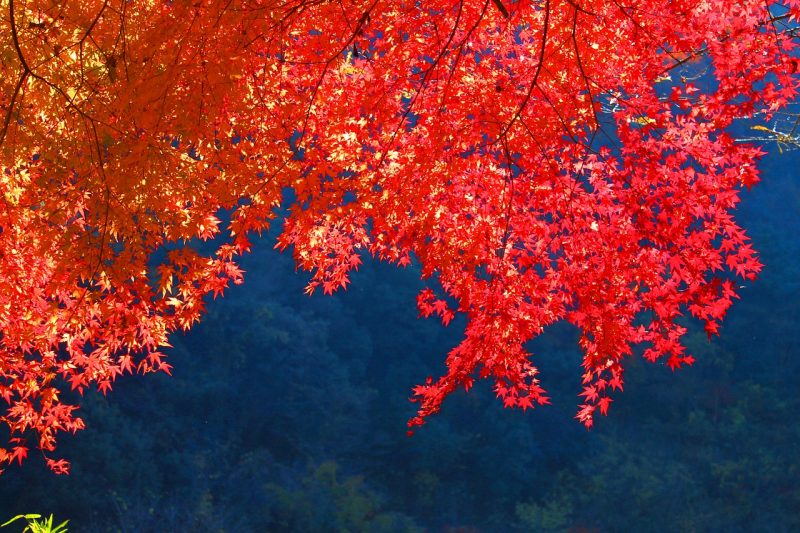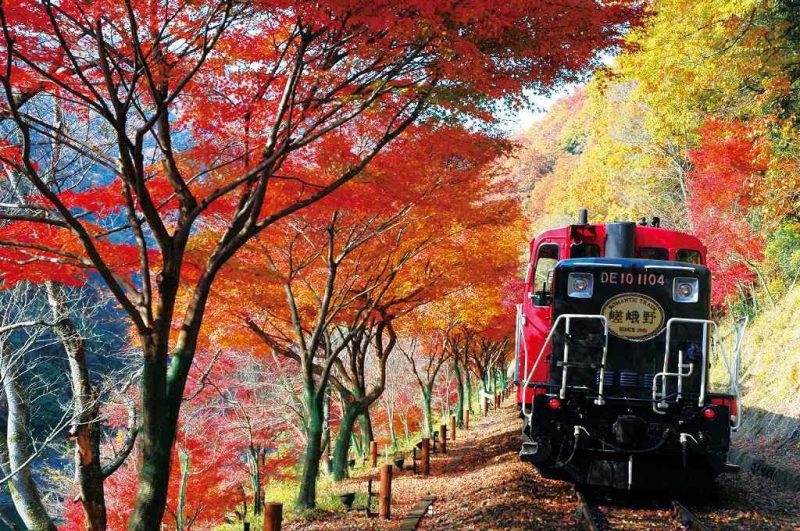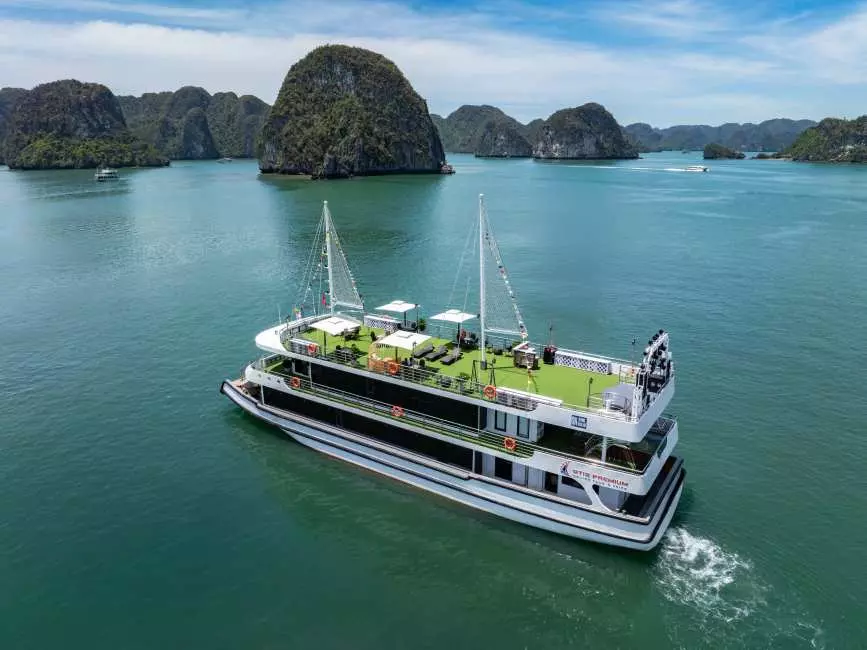Autumn colors in Japan for 2019
Japan is famous for its four distinct and breathtaking seasons. Though the cherry blossom in the spring is probably the most iconic, for many the fall is just as beautiful.
As temperatures dip after the scorching summer, the colors of the leaves change into vibrant shades of orange, red, yellow, and brown. It’s a magnificent sight which has inspired artists and poets for centuries.
In Japan, the natural phenomenon is called koyo or momiji (meaning red leaf). The activity of searching for the most striking shades of leaf is known as Momigari (red leaf hunting) It has been popular in Japan for centuries and is now a major draw for tourists.
When is the best time to experience fall in Japan? What are the best viewing locations? This handy guide is designed to help you plan the perfect momijigari vacation.
Autumn and maple leaves in Japanese culture
The tradition of momijigari has been popular since the Heian period (794-1195) and it has had a profound influence on Japanese culture. For Buddhists, it’s a moment which is important both spiritually and symbolically as it reminds us that life is ephemeral.
The maple leaf symbolizes fall in Japanese culture and its use is widespread. Momigari features heavily In eighth-century Manyoshu poetry as well as the classical Heian Period novel ‘The Tale of the Genji’. It’s typical to find screens, dishes, kimonos, and other fabrics bearing the symbol of the maple leaf.
Maple-shaped cakes are typical during the fall and the leaves themselves are often eaten as tempura: a delicious, deep-fried, sweet snack. There are various variations of maple leaf tempura throughout the country and they are often accompanied by a cup of Japanese tea.

Japanese maple leaf metaphors
‘Scatter autumn leaves’ – means to go red-faced with embarrassment.
‘Hands like tiny maple leaves’ – is used to describe the small hands of babies.
‘Like maple leaves and a deer’ – means that two things make a great pair.
Koyo viewing in Japan
Witnessing koyo is a moment of the year which the Japanese spend time anticipating and looking forward to. It’s not just tourists who agonize over the best times and places to see the fantastic colors.
There is no shortage of stunning places to enjoy the phenomenon through the best days to see it vary from place to place and from year to year. The momigari can be enjoyed in many ways including hikes, picnics, drives, bike rides and camping trips.
Many regions peak in November but some areas can start changing as early as September or as late as December. The type of maple tree determines whether the leaves are red (koyo), yellow (oyo), or brown (katsuyo).
Autumn foliage season in Japan
The turning of the leaves in Japan varies due to temperature, elevation, and latitude. What does this mean for you? Mountainous regions and the islands to the north will experience autumn colors earlier than other regions. You should also take note of autumn color reports such as this one, as well as weather forecasts, as these will keep you up to date on fall color changes due to temperature. When temperatures turn cold early, the Japanese fall colors appear sooner – up to several weeks early – and vice versa.
In general, the autumn foliage season begins in mid-September on the island of Hokkaido, the northernmost island. In other parts of Japan, like Tokyo and Kyoto the best viewing times typically range from mid-October through early December. Peak viewing in each area typically lasts between two weeks to more than one month.
Where to see the autumn leaves
The best places to see autumn colors will largely depend on when you travel. Check the forecast below for information on when different regions reach peak viewing season.
The fact is, any place in Japan is a good area for koyo viewing. If you are feeling adventurous, consider hiking the meandering trails of one of Japan’s mountains. Even if you are visiting a bustling city such as Tokyo, city parks offer thousands of trees. Another option is simply looking out the window while traveling by train.
Likely, you already plan to travel from place to place using your Japan Rail Pass. Between stations, you will see the local countryside in all its autumn glory. For a truly unique koyo experience at a relaxed pace, consider a ride on the Sagano Scenic Railway.

2019 foliage forecast by region

| Prefecture | Location | Estimated best viewing |
| Hokkaido Region | ||
| Hokkaido | Muroran | Early November |
| Hokkaido | Hakodate | Late October |
| Hokkaido | Sapporo | Late October |
| Hokkaido | Daisetsuzan National Park | Late October |
| Tohoku Region | ||
| Aomori | Aomori | Mid-November |
| Iwate | Morioka | Mid-November |
| Miyagi | Sendai | Late November |
| Akita | Akita | Mid-November |
| Yamagata | Yamagata | Late November |
| Fukushima | Fukushima | Mid-November |
| Kanto – Koushin Region | ||
| Ibaraki | Mito | Late November |
| Tochigi | Utsunomiya | Late November |
| Tochigi | Nikko | Late November |
| Tochigi | Mount Nasu-dake | Early November |
| Gunma | Maebashi | Late November |
| Gunma | Oze National Park | Mid-November |
| Saitama | Kumagaya | Early December |
| Chiba | Choshi | Late December |
| Tokyo | Tokyo | Late November |
| Kanagawa | Yokohama | Mid-December |
| Kanagawa | Hakone | Mid-November |
| Kanagawa | Kamakura | Mid-November |
| Yamanashi | Kofu | Late November |
| Nagano | Nagano | Early November |
| Hokuriku Region | ||
| Niigata | Niigata | Mid-November |
| Toyama | Toyama | Late November |
| Ishikawa | Kanazawa | Late November |
| Fukui | Fukui | Late November |
| Tokai Region | ||
| Gifu | Gifu | Late November |
| Gifu | Japan Alps | Mid-November |
| Shizuoka | Shizuoka | Late November |
| Shizuoka | Mount Fuji | Mid-November |
| Aichi | Nagoya | Late November |
| Mie | Tsu | Mid-November |
| Kansai Region | ||
| Shiga | Hikone | Late November |
| Kyoto | Kyoto | Late November |
| Osaka | Osaka | Late November |
| Hyogo | Kobe | Late November |
| Nara | Nara | Mid-November |
| Wakayama | Wakayama | Early December |
| Chugoku Region | ||
| Tottori | Tottori | Late November |
| Shimane | Matsue | Late November |
| Okayama | Okayama | Late November |
| Hiroshima | Hiroshima | Mid-November |
| Yamaguchi | Shimonoseki | Early December |
| Shikoku Region | ||
| Tokushima | Tokushima | Late November |
| Kagawa | Takamatsu | Late November |
| Ehime | Matsuyama | Late November |
| Kochi | Kochi | Late November |
| Kyushu Region | ||
| Fukuoka | Fukuoka | Early December |
| Saga | Saga | Early December |
| Nagasaki | Nagasaki | Mid-December |
| Kumamoto | Kumamoto | Early December |
| Oita | Oita | Early December |
| Miyazaki | Miyazaki | Early December |
| Kagoshima | Kagoshima | Mid-December |
Experiencing fall in Japan is nothing short of unforgettable. Don’t forget to acquire your JR Pass in order to travel between viewing locations in a simple, efficient, and affordable manner.

